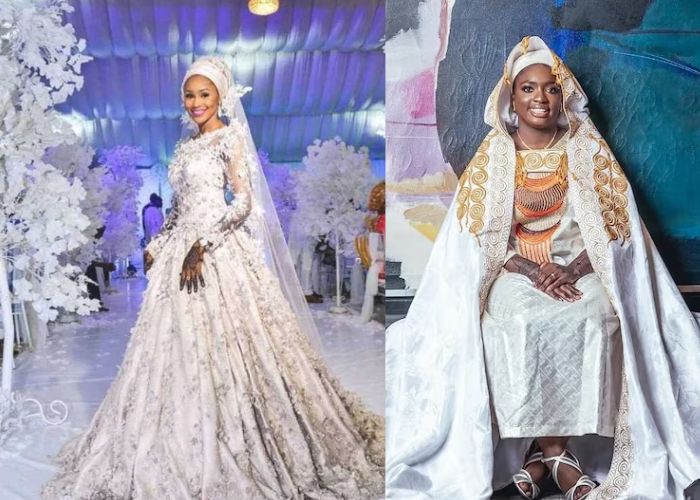Exquisite customs and gorgeous ceremonial wear are commonplace during weddings among the vibrant Hausa people, who primarily reside in Northern Nigeria. A stunning, culturally acceptable, and exquisitely beautiful gown makes the bride the centre of attention.
Delving into the captivating tradition of Hausa bridal wear, this book sheds light on the meaning, styles, and components that comprise a really unique ensemble. Let’s read below “Hausa Bride Dressings”:-
Understanding the Cultural Significance: Hausa Bride Dressings
When it comes to Hausa bridal attire, don’t be fooled. It holds great cultural significance as a symbol of a woman’s transition from virgin to married. The intricate patterns and vibrant colours of the fabric represent the good fortune, fertility, and marriage that you wish upon yourself.
Here are a few customary highlights that are integrated into Hausa wedding clothing:
- Festivity of Legacy: Embracing the rich material practices of the Hausa public, the wedding clothing is a glad event. One kind of handwoven material that praises their legacy and culture using its energetic varieties and complex plans is Aso Oke.
- Imagery of Gifts: A gift all by itself is the figurative meaning of a few segments of the piece of clothing. Adornments in red address searing enthusiasm, while gems in gold address riches and accomplishment.
- Family Inheritance: A great deal of ladies’ dresses have been worn down through a few ages, which makes the wedding more significant and exceptional.
By understanding these viewpoints, one might acquire a more profound appreciation for the social significance and tasteful worth of Hausa wedding clothing.
Unveiling the Ensembles: A Tapestry of Styles
Coming up next are instances of probably the most well-known sets:
- The Exemplary Ipele and Gele: This immortal and notable mix comprises of a Gele, a headwrap handily created to approach the face, and an Ipele, a monstrous rectangular fabric folded over the midriff to make a streaming skirt. Textures for the Ipele and the Gele may be brilliantly hued and enhanced with multifaceted sewing or brilliant subtleties.
- The Glorious Iro and Buba: Iro and Buba is the ideal combo for ladies who like to transmit an emanation of unadulterated government. Wrapping a huge piece of material called an iro around the midsection without creasing makes a voluminous skirt. Finishing the look is wearing the Buba, a figure-embracing top. The lady can customize this outfit with her style by picking textures and extras.
- The Modern Dress: As a nod to current trends, some contemporary brides choose fitted gowns crafted from luxurious fabrics like Aso Oke or lace.
- The Separates Approach: For brides seeking a more customized touch, the separate approach is one choice. They are free to pair their Aso Oke skirt with a blouse of whatever color or pattern they like. The extra options it gives may be perfect for the bride who prefers a less traditional appearance.
Beyond the Fabric: The Finishing Touches
- Jewelry: Ornate jewelry sets crafted from coral, silver, or gold are commonly worn by Hausa brides. These magnificent artifacts stand for affluence and splendor.
- Henna: Delicate henna patterns adorn the bride’s fingers and toes. Henna symbolizes a beautiful marriage, blessings, and good fortune.
- Makeup: Subtle, elegant makeup is a popular choice among Hausa brides. Emphasis is on subtle eye and lip enhancements and imperfect skin.
Braided hairstyles are a popular choice among Hausa brides.
By incorporating these details into their wedding gown, brides can achieve a cohesive and culturally significant look.
Beyond the Fabric: The Finishing Touches
Hausa bridal clothing is a sight to behold due to the enchanting blend of tradition, symbolism, and personal expression it displays. As they celebrate their heritage, the brides can be themselves. I hope you like reading “Hausa Bride Dressings”.

